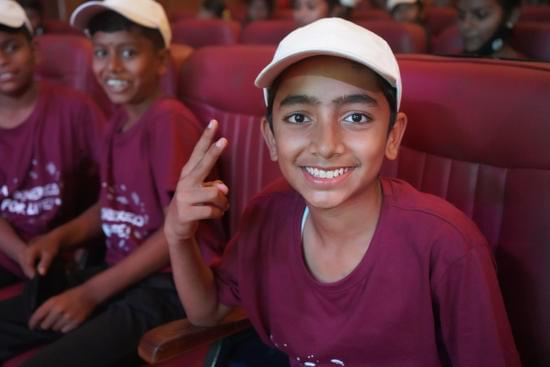In 2019-21, around 4.7 crore Indians committed suicide. 1 out of 7 young people in India among the age group of 15- to 24-year-olds are depressed or have little interest in doing anything. The pandemic restricted the world within their homes, putting a direct spotlight on the severe decline in mental well being which although was amplified by the pandemic, was simmering away unacknowledged for years as a result of our modern lifestyle that disconnects us from ourselves, people and nature. In the first year of the COVID-19 pandemic, global prevalence of anxiety and depression increased by a massive 25%, reported the World Health Organization in March 2022. The recently launched Tele-MANAS (Mental Health Assistance and Networking across States) instituted to improve the access to quality mental health counselling and care services received 443 calls in October 2022 alone, where the maximum number of calls were from people suffering from depression.
Mental Health and Well-being of School Students survey conducted by the government in 2022 found that a majority of school students’ mental health declined in secondary school in India. The National Council of Educational Research and Training (NCERT) issued guidelines to schools for early identification of mental health problems in students and establishing a mental health advisory panel in every school. The intention to develop schools as a safe and secure environment for young learners is promising. While putting a set of rules in schools to ensure the safety of students, are we addressing the root cause of rising despair and hopelessness in students? The number of student deaths by suicide in India increased by 4.5 per cent in 2021. Student suicides have been known to be driven by caste-based discrimination and by familial and societal pressure to score higher in standardised tests. If we leave these root causes untouched, the rules will do little to change the way our young people perceive their worth and the importance of their life. Is it right to blame the students if they are unable to cope with academic distress? As a society, are we normalising the notion that the youth should blame themselves for their ‘failures’? Are we shunning our responsibility to redefine failure as a stepping stone to success? When we judge a fish by its ability to climb a tree, we are undermining its immense potential to thrive.
“What will we get by dreaming and working?”protested a young Amrin in a Dream a Dream life skills session when asked to share about her dreams. The facilitator, Gangadhar, prodded further to understand why a 14 year old felt so hopeless. “We won’t get any opportunities to work. We will never be respected or treated equally as the boys and men in our community.”, shared Amrin. Acknowledging and appreciating her for her thoughts, Gangadhar enabled her to start doing something about these thoughts that were stifling her. He held a safe space as she opened up about the inequality between girls and boys at home and school. She initiated discussions about the pay-gap between celebrities and on the safety of women in our country. Very recently, she raised a complaint with the school management to provide clean water facilities for all the students. Surprised at her boldness and confidence, the school management heeded her request.
Hope is a social gift. It does not live in isolation but is created in connection with other human beings or with something greater than ourselves. Hope is created in young people by caring, non-judgemental adults like Gangadhar. It is so important for us to make our young people believe in their worth and the value of their life. We need to rethink power, agency and voice for transforming education to ensure our young people feel supported in their challenges. Is it fair to label young people as ‘failures’ if they do not pass the standardised tests which completely ignores intersectionality? We have to hear the voices of the marginalised while framing the policies and programmes. It is time to re-look and redefine the narrow academic indicators of success for students, which is putting undue and unrealistic pressure on them to achieve goals popularly believed to bring happiness. If this was indeed true, we will not be losing our young ones to suicide. The alchemy of happiness is in interconnectedness, gaining acceptance for who we are and in the belief that each one of us can thrive.
The loss of hope for a better tomorrow needs a remedy of care, acceptance and positivity. When we create a culture of respect and trust, there will not be a need to monitor or measure success in young people. The sole purpose of challenges and failures is to teach us a lesson. When lessons are learnt, no one should be labelled a ‘failure’. When our children are open to the wonders of the world, unafraid of being wrong, listening to their body, respecting it and taking time out to care for it, they grow up to be citizens who appreciate their life, their body and find hope and purpose in the future. On this Children’s Day, let us pledge to revive hope for our children.
About the author: Saba Ahmad is a Copy editor, with the Communications team at Dream a Dream


